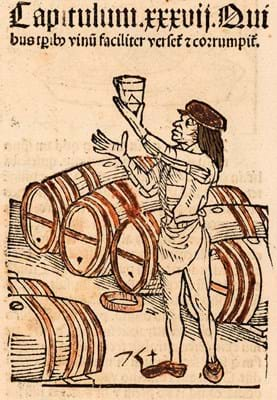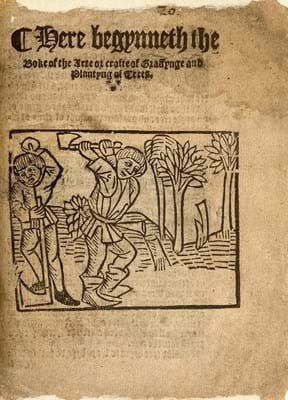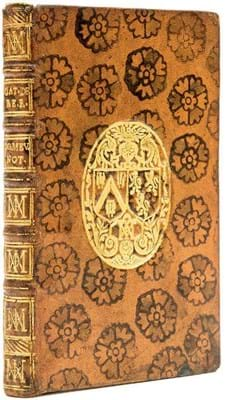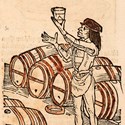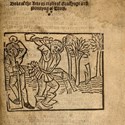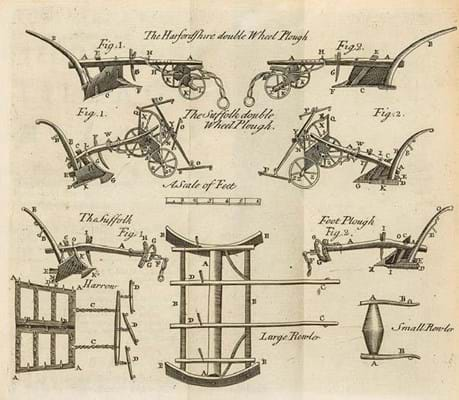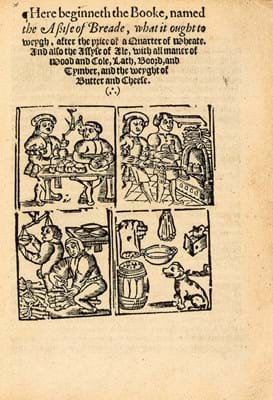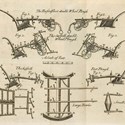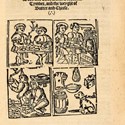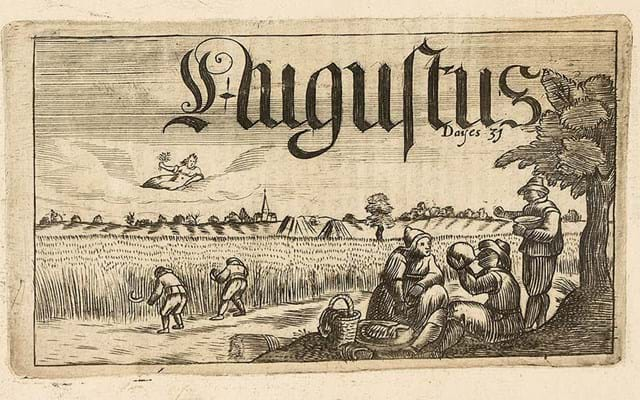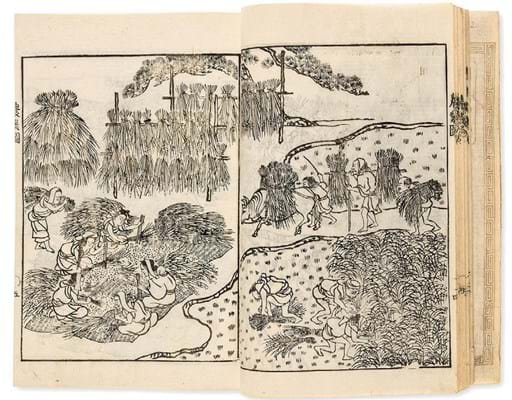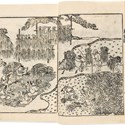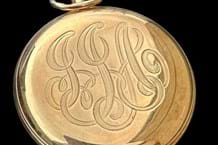The ‘Lawes Agricultural Library’ was named after John Bennet Lawes, an agricultural scientist and pioneer of chemical fertilisation at his experimental farm at Rothamsted Manor. It was formed over two decades almost a century ago, overseen by Sir John Russell, then director of what is now known worldwide as Rothamsted Research.
Founded in 1843 at Harpenden in Hertfordshire, the world’s oldest agricultural research centre remains to this day a major influence on British and international farming research, innovation and practice.
In some instances buyers at this major sale, which was led by Rupert Powell, Forum’s international head of books, were competing for what appear to be the only recorded copies, or at least those remaining outside institutional collections.
Elsewhere, however, particularly among the later material, there were plenty of multiples or job lots, collections of pamphlets, and so on.
The following selection of highlights provides a flavour of the sale and its many riches.
Fourteenth century farming
In the chronologically arranged catalogue of 800-plus lots, the first to be offered was an early 14th century manuscript presenting the almost complete text of Walter of Henley’s ‘Husbondrye’. A famous treatise on farm and estate management in the form of a sermon from father to son, it covers both crops and livestock.
One of 35 recorded manuscript copies, but the first seen at auction since 1978, it made £40,000.
Mention was made in an earlier preview (ATG No 2349) of a 1471 Augsburg first of the Ruralia Commoda of Pietro Crescenzi, the first printed book on agriculture – though one written in the early years of the 14th century by a retired Italian lawyer and landowner.
Sold for £75,000, and a work by Ian McKay whose lineage was discussed in more detail in that preview, it was one of several early Crescenzi editions.
Containing some 300 or so woodcuts, the first illustrated edition was issued anonymously and without the usual imprint details. It has, however, been dated to c.1490-95 and assigned to Peter Drach of Speyer, who in 1493 produced the first German edition using the same cuts. It sold for £36,000.
A 1478, first Italian edition at £25,000 and a finely printed Paris edition of 1529 in a handsome period binding (a copy formerly in the collections of the hawking and hunting bibliographer, CFGR Schwerdt) that made £18,000, were among other Crescenzi successes.
The surprise result, however, was provided by a later Basel edition of 1548. This was a copy bound for King Sigismund II of Poland, whose arms centre a fine binding of blind-stamped calf – probably by David of Cracow – that in its outer border features portraits of Erasmus, Melanchthon and others. Estimated at £4000-6000, it sold at £32,000.
Also rather more successful than expected, at £20,000, was an early edition of the first book on farming printed in England, an example of John Fitzherbert’s Boke of Husbandry printed in London c.1534.
In an early 20th century binding, this was a copy that had belonged to William Lambarde, the lawyer, antiquary and author of the Perambulation of Kent that is regarded as the first work of British topography. It remained in the Lambarde family library at Sevenoaks until the 1920s.
Purchased from Maggs in 1936 for £52 and estimated by Forum at £1000-1500, but sold for £16,000, was an anonymous work called … the Boke of the Arte or Crafte of Graffynge and Planting of Trees. Rather soiled, repaired and restored in modern calf, it was a far from pristine copy, but of absolute rarity. There are a couple of references in the literature, but no other copy is recorded at auction.
Only £1000 cheaper, and again well over estimate, was another great rarity, a 1569 first in a modern Rivière binding of Leonard Mascall’s …howe to Plant and Graffe all sorts of Trees.
Another Mascall work to sell well, once again at £15,000, was a 1587 first in modern limp vellum of his …Booke of Cattle. This rare copy was once in the library of Henry Yates Thompson, whose main collections focused on illuminated manuscripts.
Billed as the only recorded copy, though there is a variant version in the British Library, was …the Assise of Breade, what it ought to Weygh, after the price of a Quarter of Wheat…. Dated to c.1580 and now in a russet morocco gilt binding by Bedford, it also deals with ale, “…all manner of wood and cole, lath, boord and timber, and the weyght of Butter and Cheese”.
It was estimated at £6000-8000, but this too was sold at £15,000.
Binding bonus
Though issued from the Plantin presses in Leiden in 1598, the binding was the main attraction where the copy of Cato’s De Agricultura, sive de Rustica… was concerned.
Bound in the 17th century for the French bibliophile JA de Thou, it has a sheep binding dyed with an overall pattern of pochoir coloured rosettes.
De Thou’s arms and those of his first wife appear on the covers and their linked initials feature on the spine. In 1921 Quaritch sold it for £34; this time the price was £20,000.
Bee books sold well. A rather dust-soiled 1634 first of John Levett’s The Ordering of Bees…, an important early study of their behaviour and management, made £4800 and, published that same year, a third edition of the Rev Charles Butler’s The Feminin’ Monarchie… reached £3500. The latter was the first edition to incorporate the phonetic spelling devised by its author.
Published three years later, a rare first in a modern binding of Richard Remnant’s Discourse or Historie of Bees… made £12,000. HM Fraser’s History of Bee-Keeping in Britain describes the work as ahead of its time.
One of the dozen engraved illustrations from a 1661 first edition (in a 19th century binding by Bedford) of Matthew Stevenson’s The Twelve Months is shown left. It not only deals with husbandry and gardening, but takes in various country sports and pastimes and lists ‘The Principall Fairs in England and Wales’ for each month, it sold at £12,000.
Among important manuscripts in the collection was a compendium of agricultural practices produced by Sir John Clerk of Penicuik in Scotland. Dated 1671, his 285pp ‘Compendious Sistem of the Noblest Parts of Agriculture…’ sold at £22,000.
Produced by a landowner keen to promote new agricultural practices and to properly exploit landed estates, it contains almost 40 drawings of gardens, fountains, agricultural practices, implements, etc, some of them folding.
The diarist John Evelyn’s tree book, Sylva, is well enough known, but a less familiar work is his Philosophical Discourse of Earth. In a fine, near contemporary binding of black morocco gilt, the Rothamsted copy sold well at £3000.
Plenty of other works by writers well – or better known – in other fields were in evidence. John Locke’s Observations upon… Vines and Olives, the Production of Silk, the Preservation of Fruits, researched and written in 1679 while convalescing at Montpelier in France, but not published until 1766, sold at £3200.
No agriculture collection would be complete without the writings of Jethro Tull, and sold at £8500 was a clean and internally well-preserved 1731 first (in modern binding) of The New Horse – Houghing Husbandry: or, an Essay on the Principles of Tillage and Vegetation…
The majority of works in the collection were in English, but certainly not all. Sold at £19,000 was a fine example in contemporary French mottled calf gilt of the 1763, Paris first of VR de Mirabeau and Francois Quesnay’s Philosophe Rurale, ou Économie Générale et Politique de l’Agriculture. It was apparently the first copy seen at auction since 1978.


